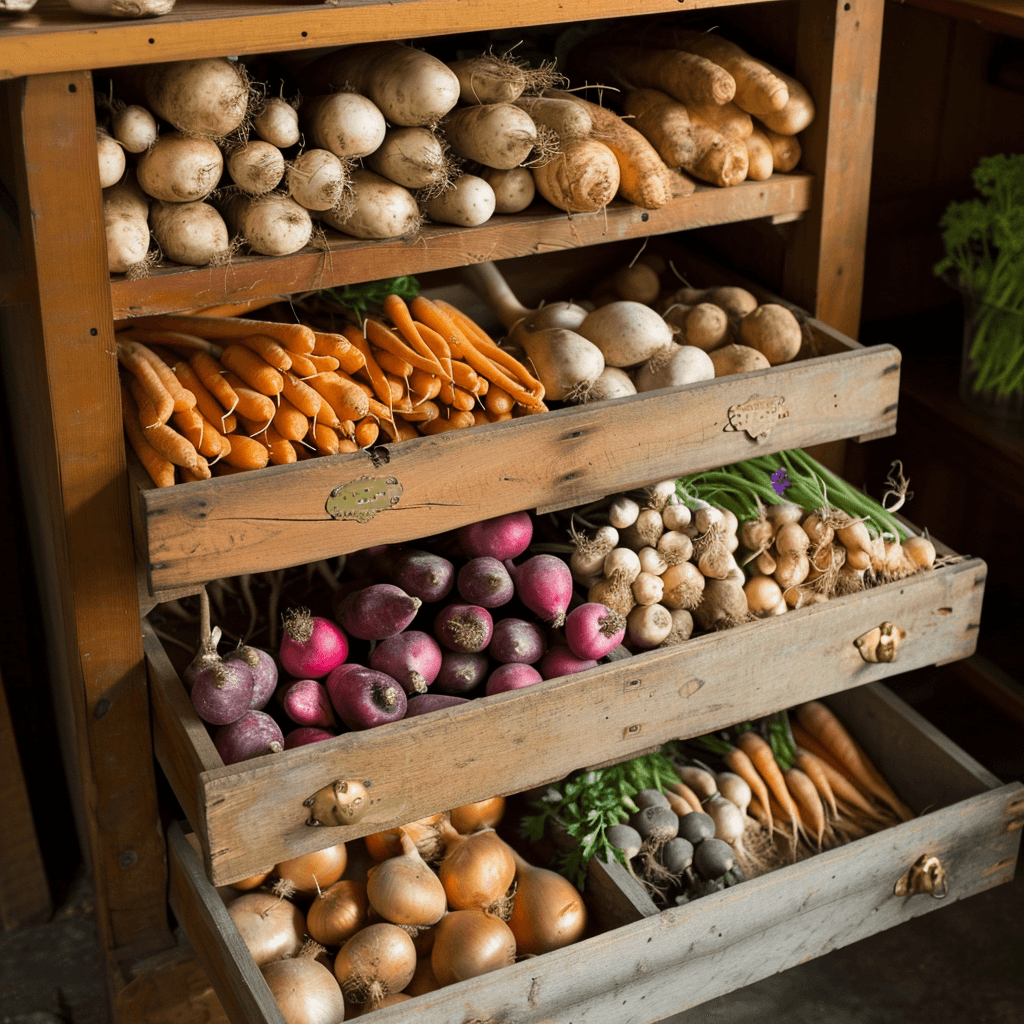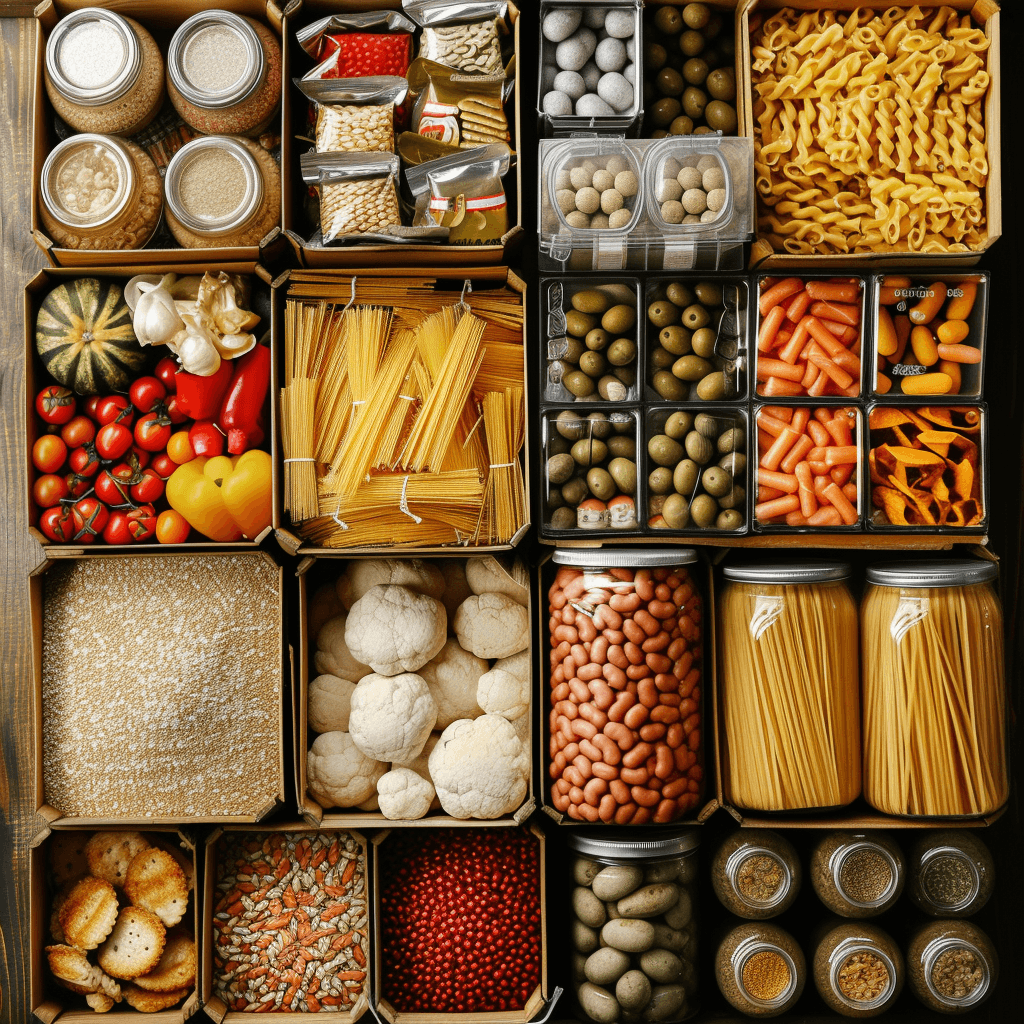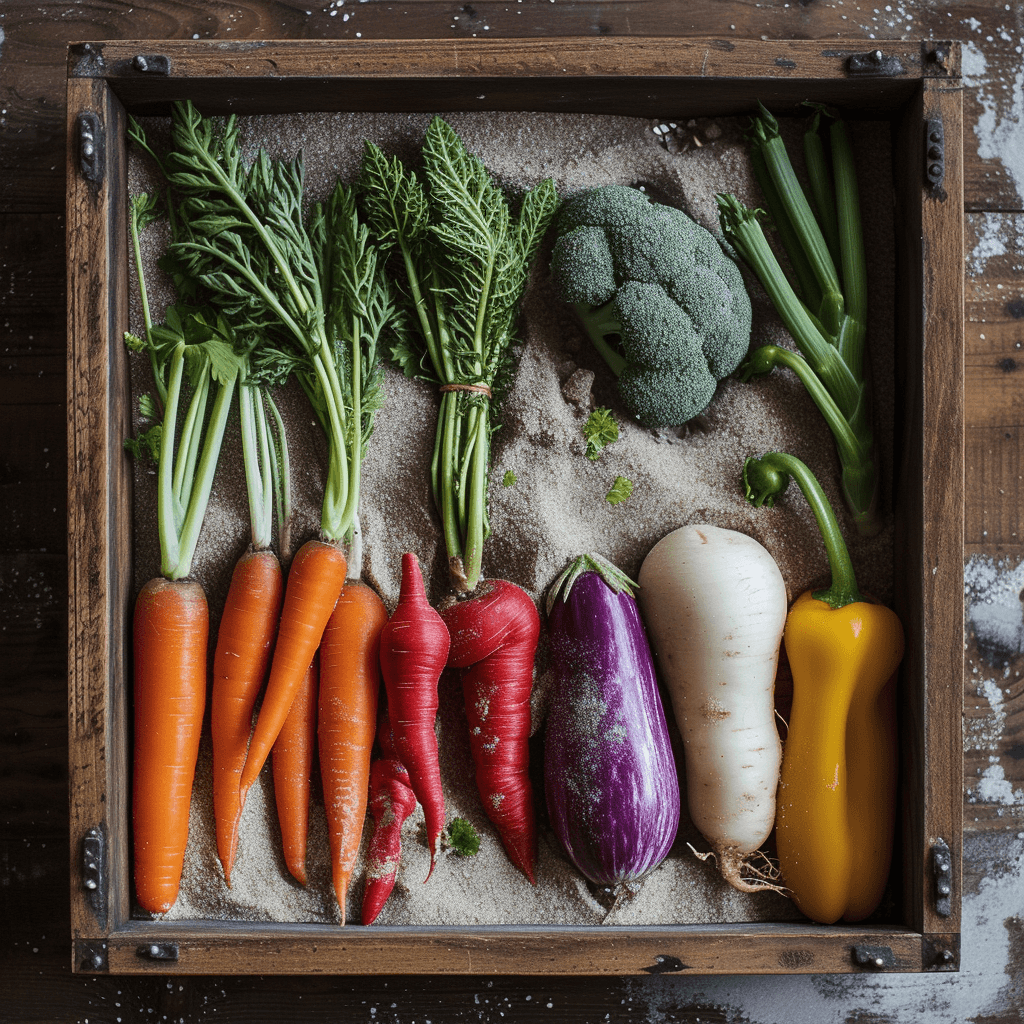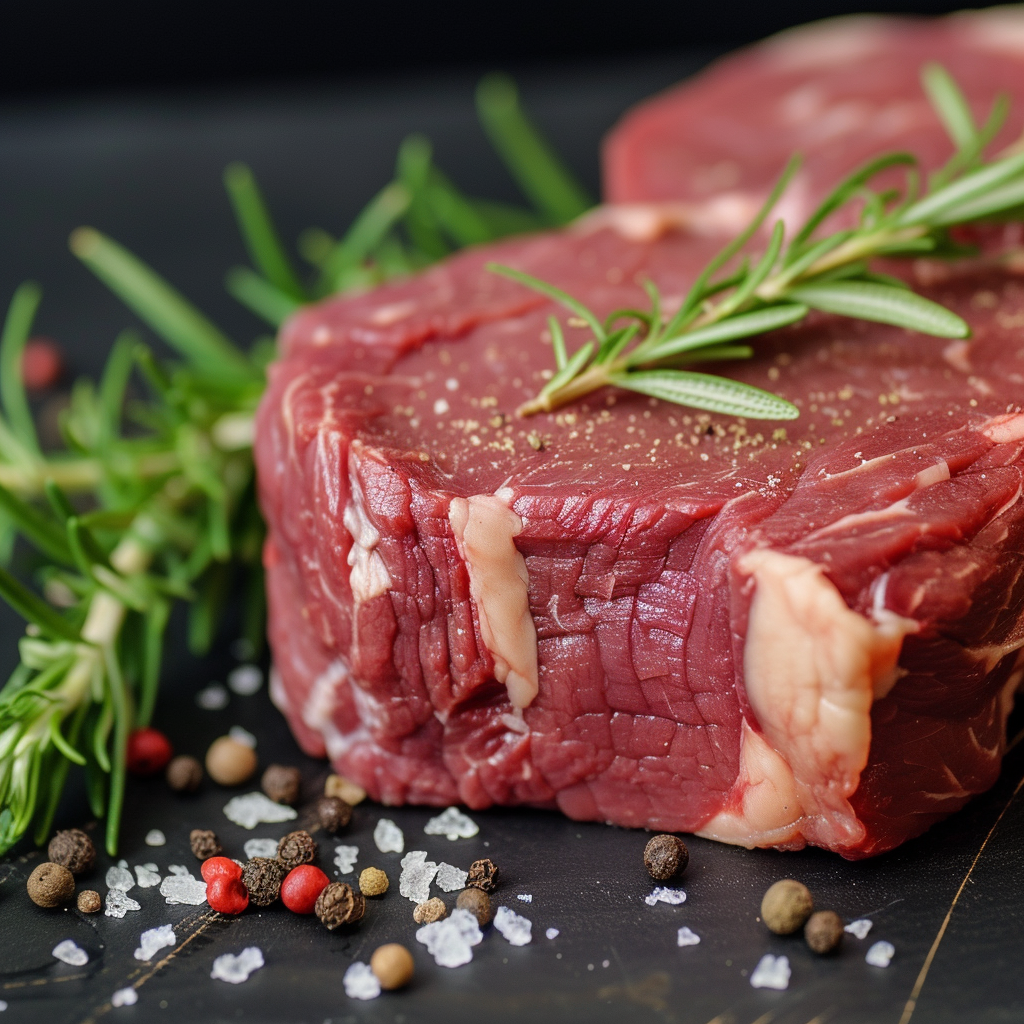So, you’ve decided to live off grid and embrace a self-sustainable lifestyle. That’s awesome! One of the challenges you’re likely to encounter is figuring out the best way to store food outside. After all, you won’t have a refrigerator or a pantry like most people do. Don’t worry, though, because today we’re going to explore some off-grid food storage options that you can consider. By the end of this article as the title suggest “What is the best way to store food outside?”, you’ll have a better understanding of how to safely store your food while living off grid.
When it comes to off-grid food storage, there are a few factors to consider. For starters, you need to think about the climate you’re living in. Is it hot and humid, or cold and dry? The specific weather conditions will impact the type of storage method you choose. Another thing to keep in mind is the amount of space available to you. If you have limited space, you’ll need to get creative with your storage solutions. Additionally, the duration for which you need to store food will play a role in determining the best option for you.
One option for off-grid food storage is root cellaring. This method has been used for centuries and involves burying your food underground, creating a natural and cool environment for long-term storage. Another option is building a DIY cold storage room or building. By insulating a small structure and using ventilation techniques, you can create a space that mimics the conditions of a root cellar. Additionally, there are off-grid refrigeration options available, such as solar-powered refrigerators or coolers, that can help keep your perishables fresh.
No matter which off-grid food storage option you choose, the key is to always prioritize food safety. Properly storing your food will not only help prevent spoilage but also protect you from potential health risks. So, stay tuned as we dive deeper into each of these storage solutions, exploring the pros and cons, and sharing some tips to help you make the most of your off-grid living experience.
Exploring Off-Grid Food Storage Options
Living off-grid is an enticing lifestyle choice that allows you to disconnect from the traditional power grid and live in a self-sustainable manner. One of the key aspects of off-grid living is ensuring that you have a reliable and efficient method of storing food. In this article, we will explore various options for off-grid food storage, from traditional methods to innovative technologies.
Understanding Off-Grid Living
Before delving into the world of off-grid food storage, it’s important to have a basic understanding of off-grid living itself. Off-grid living refers to a lifestyle where individuals or communities rely on alternative sources of energy and produce their own resources. It typically involves generating electricity through solar panels or wind turbines and using techniques such as rainwater harvesting and composting. By living off-grid, individuals can reduce their environmental impact and become less dependent on external resources.
Importance of Food Storage in Off-Grid Living
Food storage plays a crucial role in off-grid living. Without access to grocery stores and other conventional food sources, it becomes necessary to store food for extended periods. The ability to store food efficiently ensures that you have a continuous supply in case of emergencies or scarcity. Furthermore, proper food storage allows you to preserve the quality and nutritional value of the food, minimizing waste and maximizing the utility of your resources.
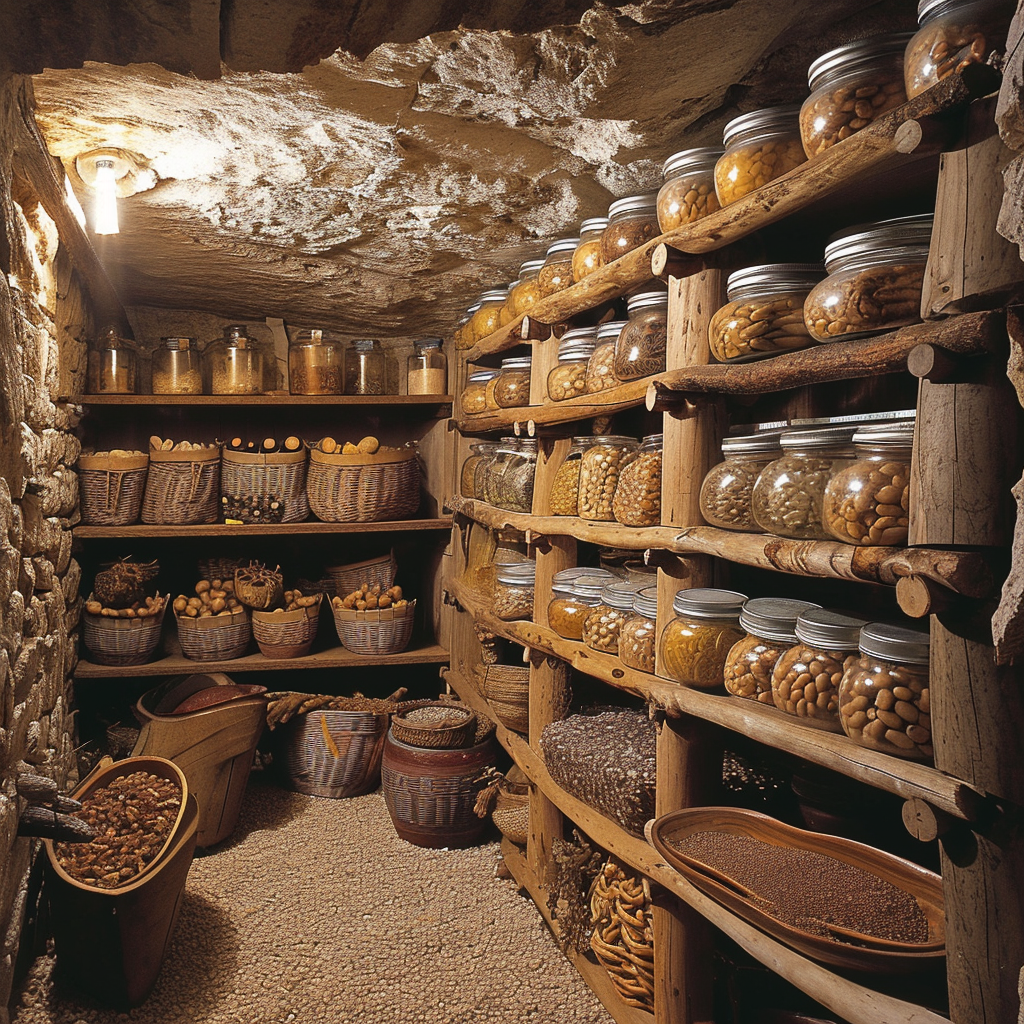
Factors to Consider for Off-Grid Food Storage
When considering off-grid food storage, several factors come into play. Firstly, you need to assess the amount of food you plan to store and for how long. This will determine the storage capacity required. Secondly, the climate and environmental conditions of your off-grid location need to be considered. Extreme temperatures or high humidity can affect the shelf life of stored food. Lastly, your storage method should align with your lifestyle and preferences. Traditional methods may require more manual labor, while modern solutions often come with technological conveniences.
Traditional Methods of Off-Grid Food Storage
One of the most commonly used traditional methods of off-grid food storage is the root cellar. A root cellar is a simple underground structure that utilizes the natural cooling properties of the earth to keep your food fresh. It typically consists of a dug-out chamber with thick walls and a vent for airflow. Root cellars work by maintaining a cool, dark, and moderately humid environment, perfect for storing root vegetables, fruits, and certain types of canned goods. However, they may require periodic monitoring and maintenance to control temperature and humidity levels effectively.
Pros and Cons of Root Cellars
Root cellars have been used for centuries for their effectiveness in food preservation. One of the significant advantages of root cellars is their low cost and simplicity. You can easily build one yourself with basic construction materials. Additionally, root cellars require no external power source, making them ideal for off-grid living. On the downside, root cellars are limited in terms of the types of food they can store. Items that require colder temperatures or specific humidity levels may not be suitable for storage in a root cellar. Furthermore, the interior space in a root cellar may be limited, making it challenging to store large quantities of food.
Utilizing Above-Ground Food Storage Systems
If building an underground root cellar is not an option for you, above-ground food storage systems offer practical alternatives. For instance, a pantry or cold room within your off-grid home can be designed specifically for food storage. These rooms should be well-insulated and have temperature control mechanisms such as natural ventilation or a small solar-powered fan. Shelving systems can be installed to maximize storage space and ensure proper organization. This method allows for easy access to your food items and reduces the need for frequent monitoring and maintenance.
Exploring Modern Off-Grid Food Storage Solutions
With advancements in technology, modern off-grid food storage solutions have emerged. One such solution is the use of solar-powered refrigeration. Solar-powered refrigerators are designed to run solely on solar energy, making them ideal for off-grid living. These refrigerators have photovoltaic panels that convert sunlight into electricity, which is used to power the cooling system. Solar-powered refrigerators offer a larger storage capacity than traditional root cellars and can maintain a consistent temperature, ensuring the freshness of your food. However, they do require an initial investment in solar panels and batteries.
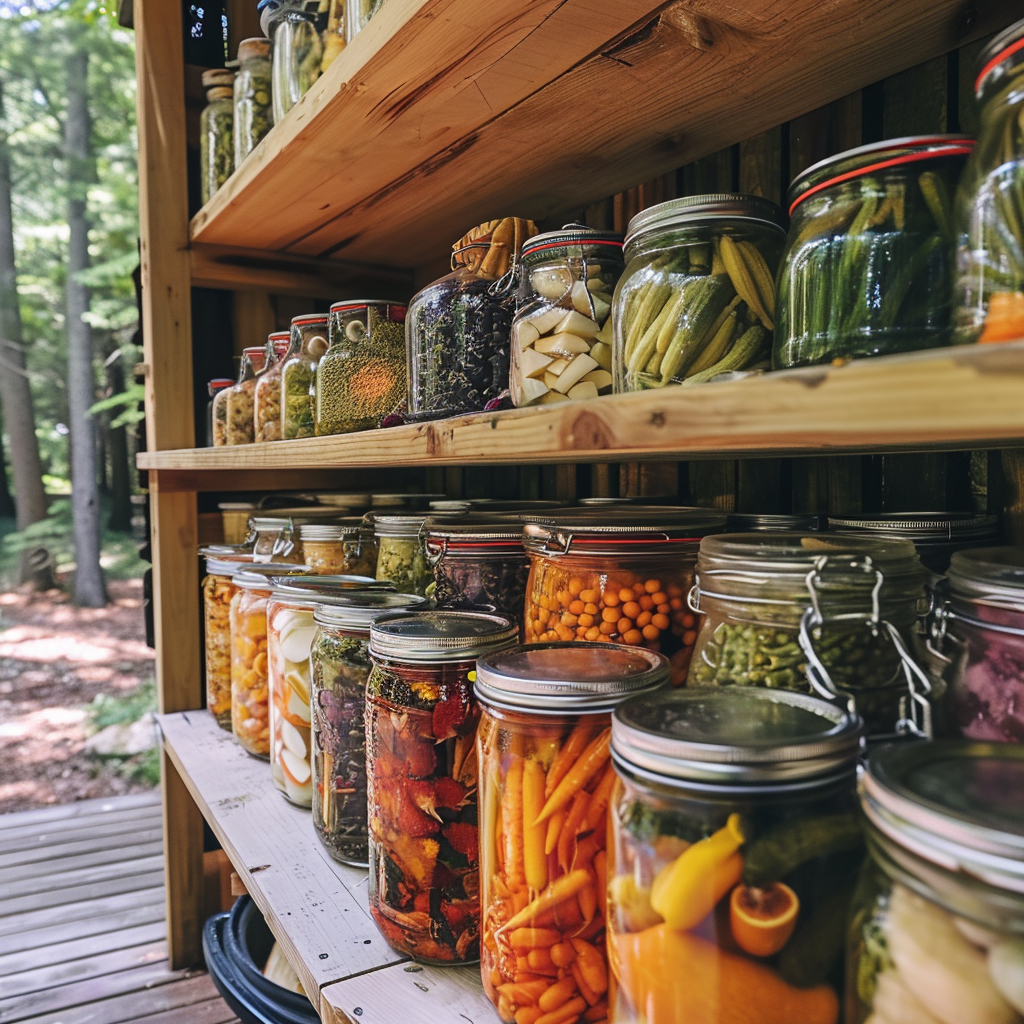
Benefits and Challenges of Solar-Powered Refrigeration
Solar-powered refrigeration offers several benefits for off-grid food storage. Firstly, it provides a reliable and continuous cooling system, eliminating the worries of inconsistent temperatures. This is especially valuable for storing perishable items such as meat and dairy products. Secondly, solar-powered refrigerators help reduce the dependency on non-renewable energy sources, contributing to a more sustainable lifestyle. However, it is important to consider the challenge of limited sunlight during certain seasons or in areas with cloudy weather. This can affect the efficiency of the solar panels and potentially impact the refrigerator’s performance.
Innovative Off-Grid Food Storage Technologies
In addition to solar-powered refrigeration, there are other innovative off-grid food storage technologies available. For example, evaporative coolers and zeer pots utilize the principle of evaporative cooling to keep food fresh. Evaporative coolers, also known as swamp coolers, use water and air circulation to create a cooler environment. Zeer pots, on the other hand, consist of two clay pots with sand in between. The evaporating water from the sand cools the inner pot, creating a refrigeration effect. These low-tech solutions can be easily built and are suitable for off-grid living in hot and dry climates.
Conclusion: Choosing the Right Off-Grid Food Storage Method
When it comes to off-grid food storage, there are various options to choose from depending on your needs and circumstances. Traditional methods like root cellars offer simplicity and cost-effectiveness, while modern solutions like solar-powered refrigeration provide convenience and reliability. It is important to consider factors such as storage capacity, climate conditions, and personal preferences when selecting a food storage method for off-grid living. By exploring different options and understanding their benefits and limitations, you can make an informed decision and ensure that your food remains fresh and readily available in your off-grid lifestyle.

